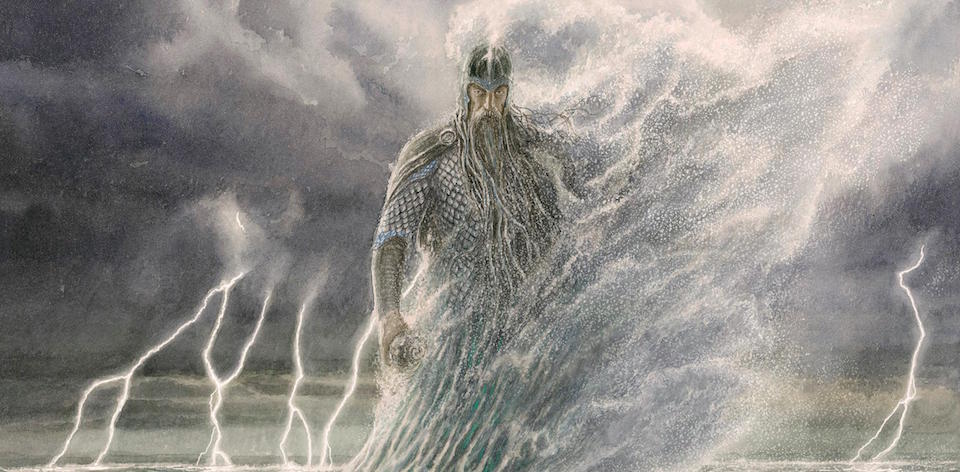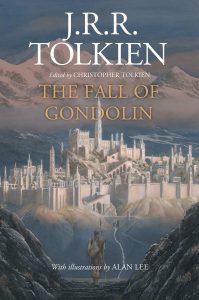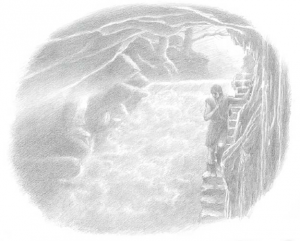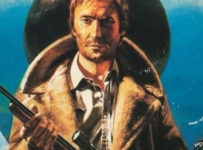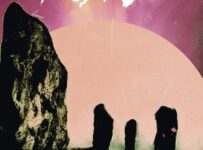Welcome back to The Read Goes Ever On: a structured reading (and in some cases re-reading) of the works of J.R.R. Tolkien.
As a casual fan who has read the ‘popular ones’ several times, this series is an attempt to explore Tolkien’s grand legendarium chronologically. Hundreds of scholars have already done deep reads, so this is just me trying to better understanding of Tolkien’s myths and legends by seeing them in context. Or to just point out cool stuff I liked along the way. Legendary spoilers abound.

THE FALL OF GONDOLIN is the third and last of Tolkien’s Great Tales of the Elder Days. Along with Beren and Lúthien and The Children of Húrin, they are the most important stories of the First Age of Middle-earth. Beginning with the awakening of Men in Hildórien, and ending with the defeat of Morgoth, they are also the pillars upon which The Lord of the Rings is build.
If Beren and Lúthien is the most romantic of these tales, and The Children of Húrin the most tragic, then THE FALL OF GONDOLIN is the one with the most destruction. It broadly tells of the coming of Tuor son of Huor (and cousin of Túrin Turambar) to Gondolin, the hidden city of the Elves. Gondolin is betrayed by Maeglin, the son of the dark Elf Eöl and Arendhel (remember them from The Silmarillion?), and is ultimately sacked by Morgoth after a war with King Turgon’s forces.
If you’re like me, and came to the non-LOTR parts of the Legendarium much later, you may find that we’re really getting into the weeds here. Yet in many ways this is where it all began for the saga. Tolkien first wrote the earliest version of ‘The Fall of Gondolin’, according to notes in Christopher Tolkien’s prologue, “during sick-leave from the army in 1917.” In a letter written to W.H. Auden in 1955, the elder Tolkien described it as “the first real story of this imaginary world.”
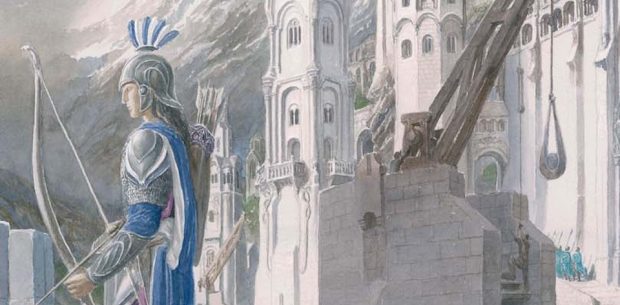
As an early tale, there is so much of the grand storytelling that Tolkien would become known for, albeit in a much more compact structure. The seeds were planted back in Nírnaeth Arnoediad (or the “Battle of the Unnumbered Tears”), with Morgoth’s loss so great that he cursed the line of Húrin and swore vengeance on Gondolin. If and when he found it, of course. Indeed, this Tale is truly Great, from the dragons to the Elven warrior battling a Balrog.
In compiling this volume, Christopher Tolkien has followed the same approach he took with the standalone Beren and Lúthien in 2017 (when he was but a slip of a lad at 93 years young). He presents various versions of his father’s tale: one he calls “The Earliest Text” (from around 1917), “Sketch of the Mythology” (1926) and the “Quenta Noldorinwa” (1930). The chapter called “The Last Version” comes from around 1951, before Tolkien abandoned the tale. It is the most detailed of the crop.
Whether you are a scholar of Tolkien or a process junkie, THE FALL OF GONDOLIN in this form is a vital exercise in understanding the life cycle of a story’s development. Writing to Allen & Unwin in 1937, Tolkien said:
“The magic and mythology and assumed ‘history’ and most of the names (e.g. the epic of the Fall of Gondolin) are, alas!, drawn from unpublished inventions…I believe they give the narrative an air of ‘reality’ and have a northern atmosphere.”
Recounted in Christopher Tolkien’s chapter “The Evolution of the Story,” this ambition was part of J.R.R. Tolkien’s biggest struggle: trying to make the “one long Saga of the Jewels and the Rings” (as he wrote to Milton Waldman in 1951) built around his “made-up languages,” while simultaneously crafting an accessible version of the world in Lord of the Rings.
Which will always remain slightly frustrating to Tolkien aficionados, one Christopher says is “perhaps the most grievous of his many abandonments.” This inability to find a balance between publisher and vision cut his work short on the last “fully evolved” version of The Fall of Gondolin, just after Tuor passed through the last of the Seven Gates and “beheld a vision of Gondolin amid the white snow.” While the sketches and notes he left behind tell us exactly where the story goes from here, the 60-odd pages of “carefully written manuscript” were indicative of a saga worthy as a companion piece to Tolkien’s most iconic works.
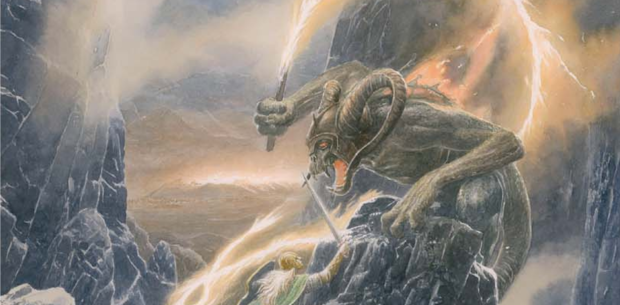
In fact, there’s so much here that will appeal to casual Lord of the Rings fans. The Elven warrior Glorfindel fights a Balrog, and after running him through the creatures “fell backward from the rock, and falling clutched Glorfindel’s yellow locks beneath his cap, and those twain fell into the abyss.” If that doesn’t recall a certain moment found in The Fellowship of the Ring, then you definitely need to read a bit more Tolkien.
There’s an Elf named Legolas of the House of the Tree too: he’s not the same one we later meet from Mirkwood, but his name (translating to “green leaf” and “keen sight”) echoes down through the ages to his LOTR counterpart. You’d almost recommend a fan to jump in here, but for the masses of context needed from the previous Great Tales (especially anything to do with the Silmarils).
Christopher Tolkien has said that “in my ninety-fourth year THE FALL OF GONDOLIN is (indubitably) the last” book after many decades of editing and republishing his father’s work. Which is all fair enough really, especially for someone who had been listening to his father’s works since he was one of the first to hear The Hobbit as a child. What he has achieved in the 82 years since that book was published is remarkable. Even if you have issues with his editorial intervention, he has shone a light on the importance of The Silmarillion and elevated the overall saga into something bigger than we ever realised.
In the next instalment of The Read Goes Ever On, I’ll dip into Unfinished Tales. Or more accurately: Unfinished Tales of Númenor and Middle-earth. It presents the more unified fragments of The Silmarillion in their original form, once again giving us insight into Tolkien’s mind.

